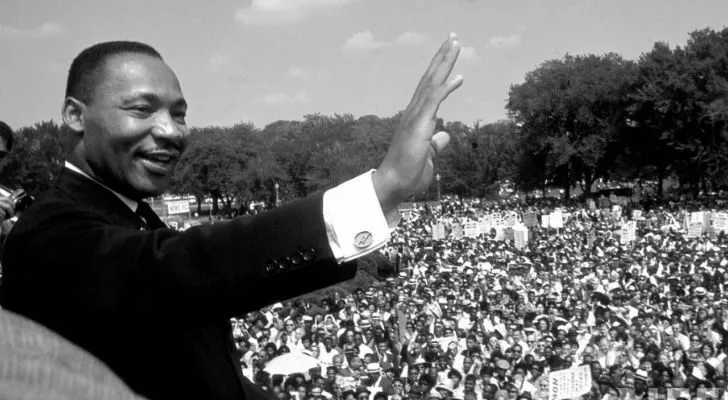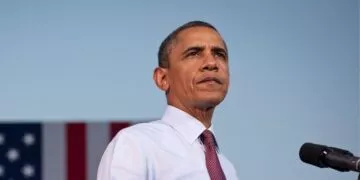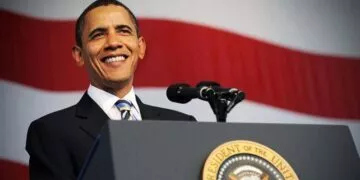Martin Luther King Jr. stepped into the role of civil rights leader at a time when racial inequality became a powder keg of discontent.
As a social activist, his impact on the nation’s policies and practices was enormous.
Through powerful oratory, he consistently urged action without violence.
Here are 50 facts you may not have known about this inspirational man and his fight for justice and equality.
Born in Atlanta, Georgia, on January 15, 1929, Martin Luther King Jr. lived most of his life in Georgia and Alabama.
At birth, he was named after his father, Michael King. His father was influenced by 16th-century protestant reformer Martin Luther, who revolutionized religion and founded the Lutheran church. He changed his own name and the name of his 5-year-old son in honor of Luther.
King was the middle of three kids, with an older sister, Christine, and a younger brother, Alfred.
His father, grandfather, and great-grandfather were all ministers, and he became a minister. He even ministered at the same church where his father and grandfather were pastors.
Although he struggled with spelling and grammar all his life, he became one of the most influential speakers in history.
The first speech he ever gave was in 1944 for a public speaking contest when he was a junior in high school. He said, “Black America still wears chains. The finest negro is at the mercy of the meanest white man.” He won the contest.
On the way home from winning the speech contest, the bus driver ordered King to give up his seat on the city bus to a white man. This was just one of the events that propelled him forward.
At the age of 15, he spent the summer working on a tobacco farm in Connecticut. Here, King got his first taste of equality, amazed that he could sit anywhere on a bus, eat at any restaurant, and attend church with whites.
Music was always an interest of his. He played piano, took violin lessons, and was an excellent singer. He loved jazz music.
Martin Luther King Jr. enjoyed dressing fashionably and was often found in tweed suits and patent leather shoes at school dances.
After skipping 9th and 11th grades, he enrolled in college at age 15, graduating with a degree in Sociology.
During his freshman year of college, he played on the football team. At the time, most college-aged young men had gone off to war.
At the seminary he attended, he was one of only 11 black students, serving as class president and graduating as valedictorian.
Following seminary, he wanted to get a PhD in theology. He was accepted not only at the prestigious University of Edinburgh in Scotland but also at Boston University in Massachusetts. He chose Boston.
In 1991, long after his death, scholars discovered that much of his PhD dissertation was plagiarized.
While attending college, he fell in love with a white woman, and they wanted to get married. His father pointed out that if he did, he would never be allowed to serve as pastor in any church. Interracial marriage did not become legal in the US until 1967.
He met his wife, Coretta Scott, when he was in college. She was a talented singer, studying opera when they met.
Coretta initially didn’t want to go out with him because she wasn’t interested in being married to a preacher.
They got married in 1953 and remained married until his death.
Together, they had four children born between 1955 and 1963: Yolanda, Martin Luther King III, Dexter, and Bernice.
Martin Luther King was only 25 when he joined the fight for equality. He was living in Montgomery, Alabama, where he was the pastor of a church when Rosa Parks refused to give up her seat on a bus to a white man, sparking a bus boycott. King was chosen as spokesperson by the organizers of the boycott.
When his house was fire-bombed during the boycott, King prevented his neighbors from rioting. Coretta, who was inside the house with their young daughter at the time of the bombing, was not injured. This was only one of many death threats King received.
King survived his first assassination attempt in 1958 when a mentally ill black woman stabbed him with a 7-inch (18 cm) letter opener. The blade narrowly avoided his aorta. Emergency surgery saved his life.
When the bus boycott ended successfully, organizers formed a coalition called the Southern Christian Leadership Conference (SCLC). This association united black churches and other organizations in a single powerful body. King played a pivotal role in the SCLC until his death.
King was inspired by the peaceful protest tactics of Mahatma Gandhi. In the spring of 1959, he and his wife spent five weeks traveling throughout India to study his methods.
King also followed the writings of author Henry David Thoreau, who wrote the famous pamphlet “Civil Disobedience.” This essay taught that it was the duty of people to refuse to follow unfair laws and urged peaceful resistance.
Although he was arrested 29 times, nearly all were on trumped-up charges. Once, it was for driving five miles over the speed limit. Another time, it was for driving in Georgia with an Alabama driver’s license.
Once, when he was arrested for participating in a sit-in, he was handed a harsh sentence because he was on probation for an earlier arrest. The sentence was four months of hard labor, which was difficult and dangerous. Robert F. Kennedy stepped in to secure his release.
Following another arrest for participating in a peaceful protest, he was given the option of serving 45 days in jail or paying a stiff fine. He chose to remain in jail, which caused problems for the Police Chief. Bail was posted anonymously.
Years later, it was revealed that noted white minister Billy Graham paid Martin Luther King’s bail that day.
While in jail in Alabama, King wrote a letter that became a civil rights manifesto. “Letter from Birmingham Jail” outlined the moral foundation of the right to fight for equality.
Martin Luther King spoke in front of a group of 250,000 people who gathered for a protest march in Washington, DC, in 1963. He famously said, “I have a dream that my four children will one day live in a nation where they will not be judged by the color of their skin but by the content of their character.”
When led a march from Selma, Alabama, to Montgomery to fight for the rights of black citizens to vote, the 54-mile (87 km) walk took five days.
The march from Selma to the state capitol building in Montgomery started with 2,500 people and ended with 25,000.
King was vocal in his opposition to the Vietnam War, an unpopular stance with many politicians.
Under orders from Attorney General Robert Kennedy, the FBI under J. Edgar Hoover established secret surveillance on him, suspecting he was working with communists. No such evidence was ever found.
In his final fight, King led protests supporting black sanitation workers in Memphis, Tennessee. In his final speech, “I Have Been to the Mountaintop” he seemed to predict his impending death.
He was shot on March 18, 1968, as he stood on the balcony of the Lorraine Motel in Memphis. Today, the motel has been converted into the National Civil Rights Museum.
James Earl Ray, captured two months later, was accused of the crime, though he claimed to be innocent.
Many people thought James Earl Ray was innocent, including Martin Luther King’s family.
James Earl Ray was sentenced to death, but King’s family stepped in and asked that the death sentence be commuted to life without parole, which was granted.
Martin Luther King was only 39 when he died. He spent just 13 years in the public eye.
Throughout his life of activism, he traveled more than 6 million miles (9.6 million km) and spoke at over 2,500 events.
At age 35 in 1964, he became the youngest man ever to receive a Nobel Peace Prize.
Martin Luther King was the first black person to be named Time magazine’s Person of the Year.
Today, more than 900 streets are named after him in the US.
A 35-acre area of Atlanta was designated Martin Luther King Jr. National Historic Park in 1974. Expanded in 2001, it now includes his boyhood home, the church where he, his father, and grandfather were preachers, and his gravesite next to Coretta, who died in 2006.
In 1977, he was posthumously awarded the Presidential Medal of Freedom. He also received the Congressional Gold Medal in 2003.
In 2011, a memorial to him was installed on the National Mall in Washington, DC.
The first official Martin Luther King Day holiday was observed on January 20, 1986. It was formed to be a day of service, encouraging people to serve their community. It is celebrated on the third Monday of January.

Martin Luther King accomplished more for racial equality than had been done in the previous three centuries.
Legislation passed during and after his fight for equality includes the Civil Rights Act, the Voting Rights Act, and the Fair Housing Act.
His strength lay in his ability to unify the actions of all oppressed people and his constant insistence that social change must come about through peaceful means.


















